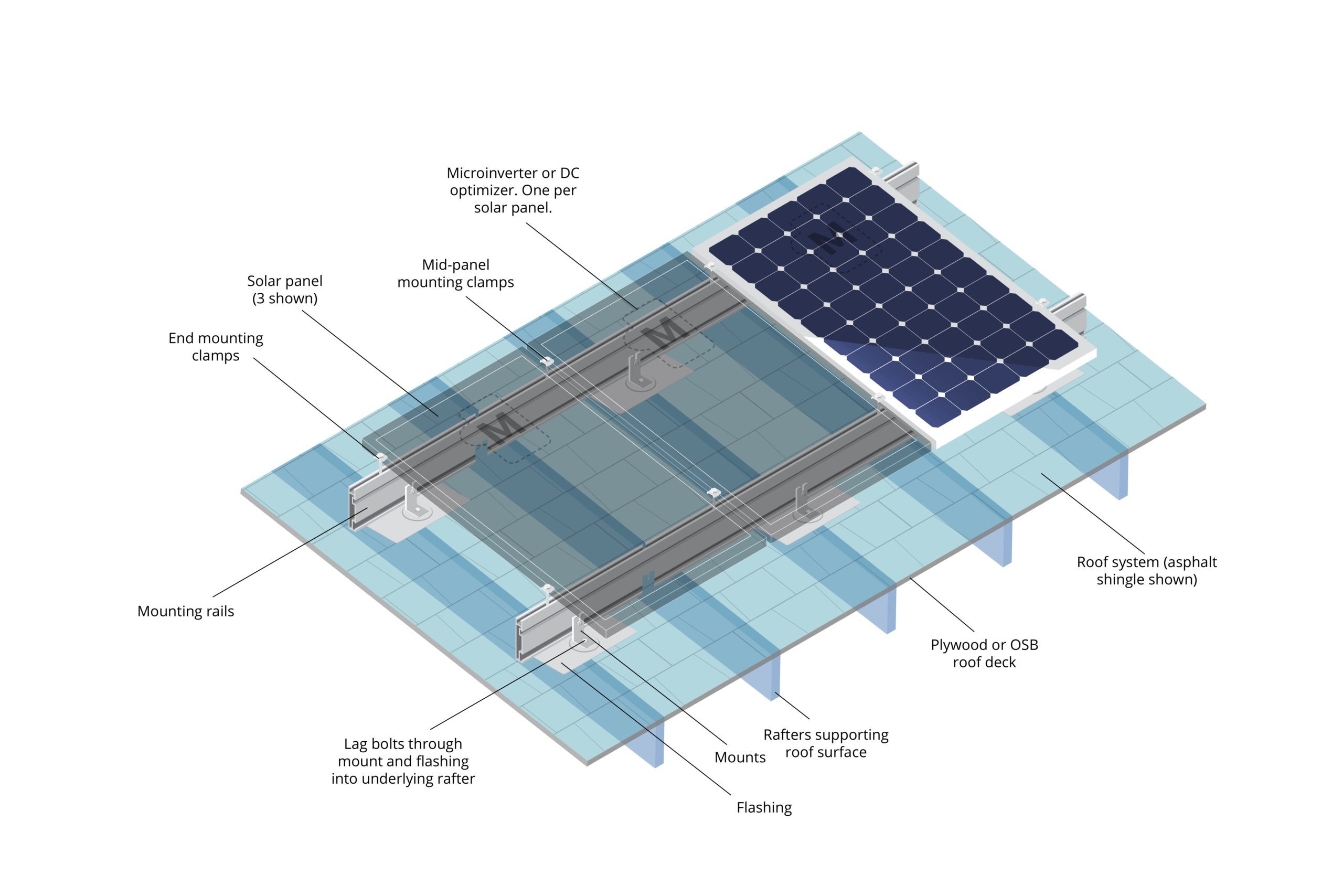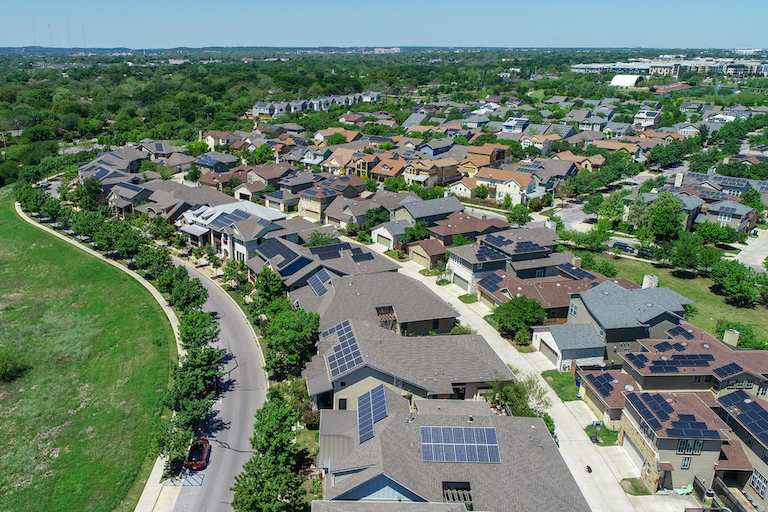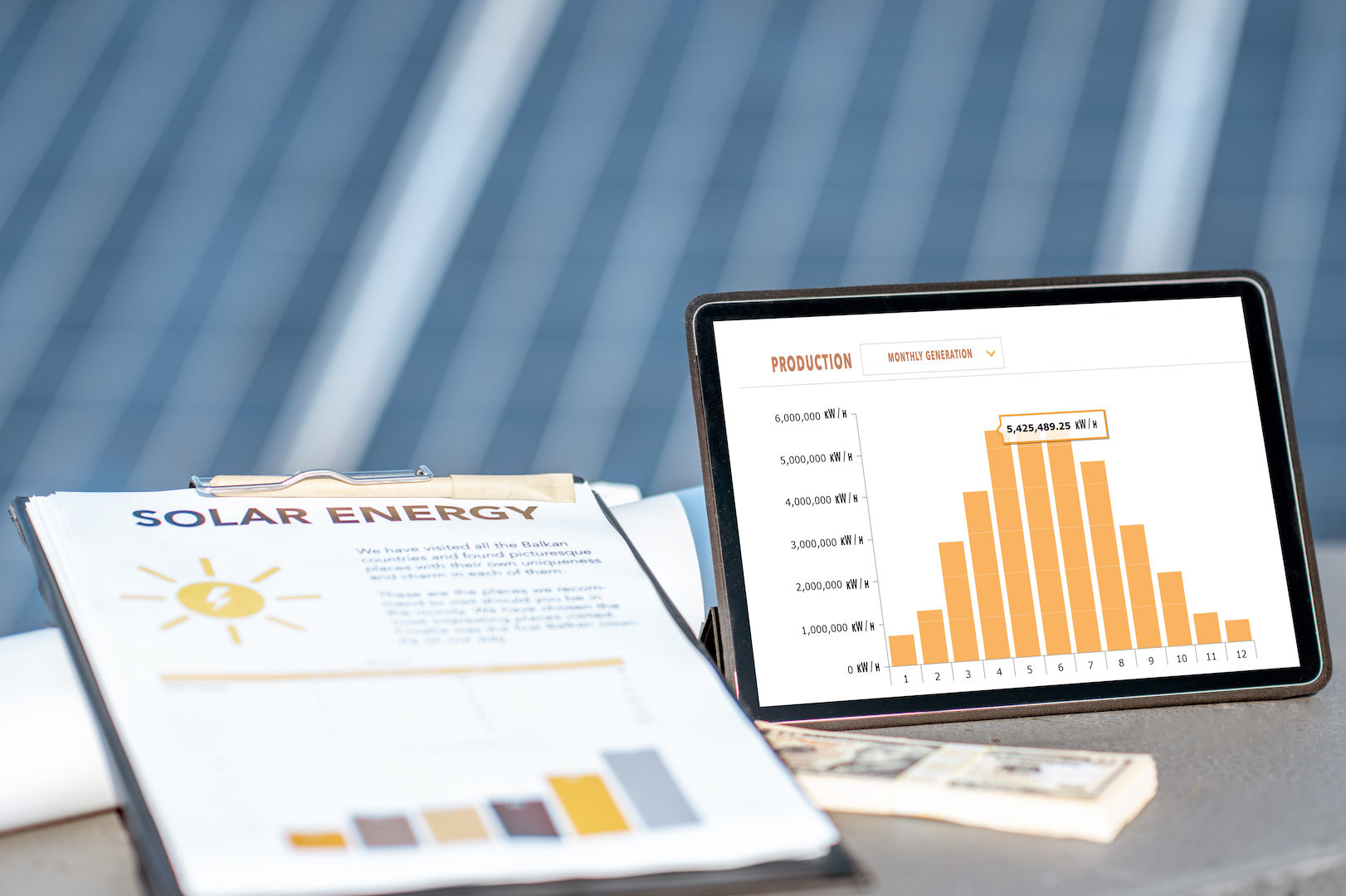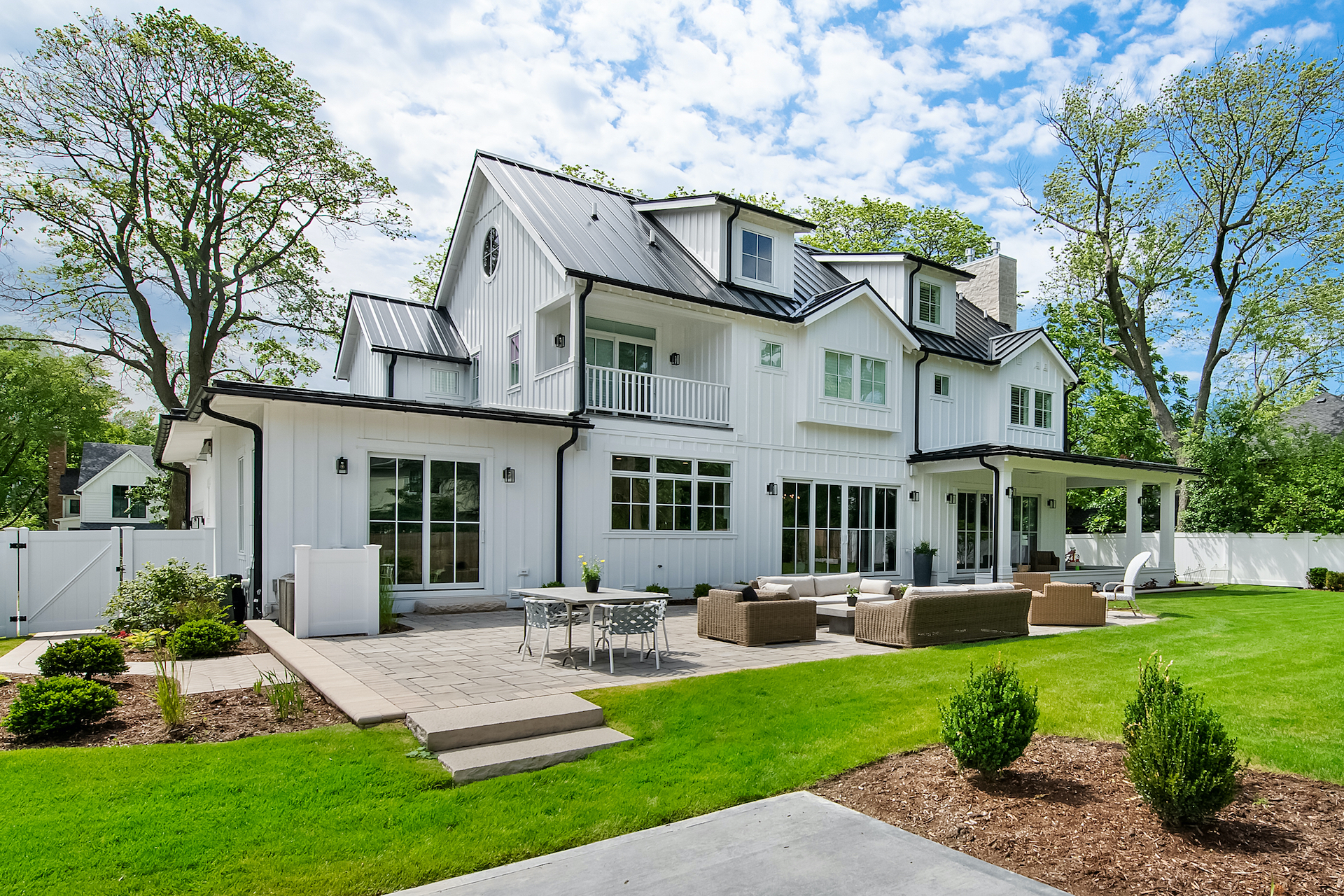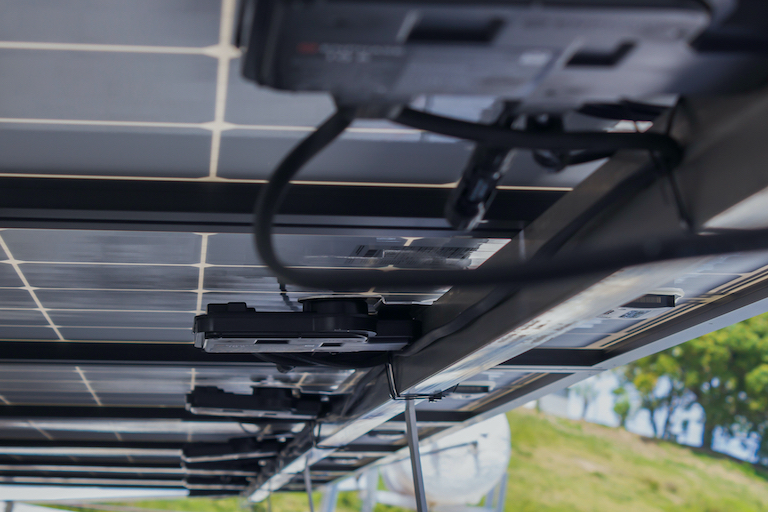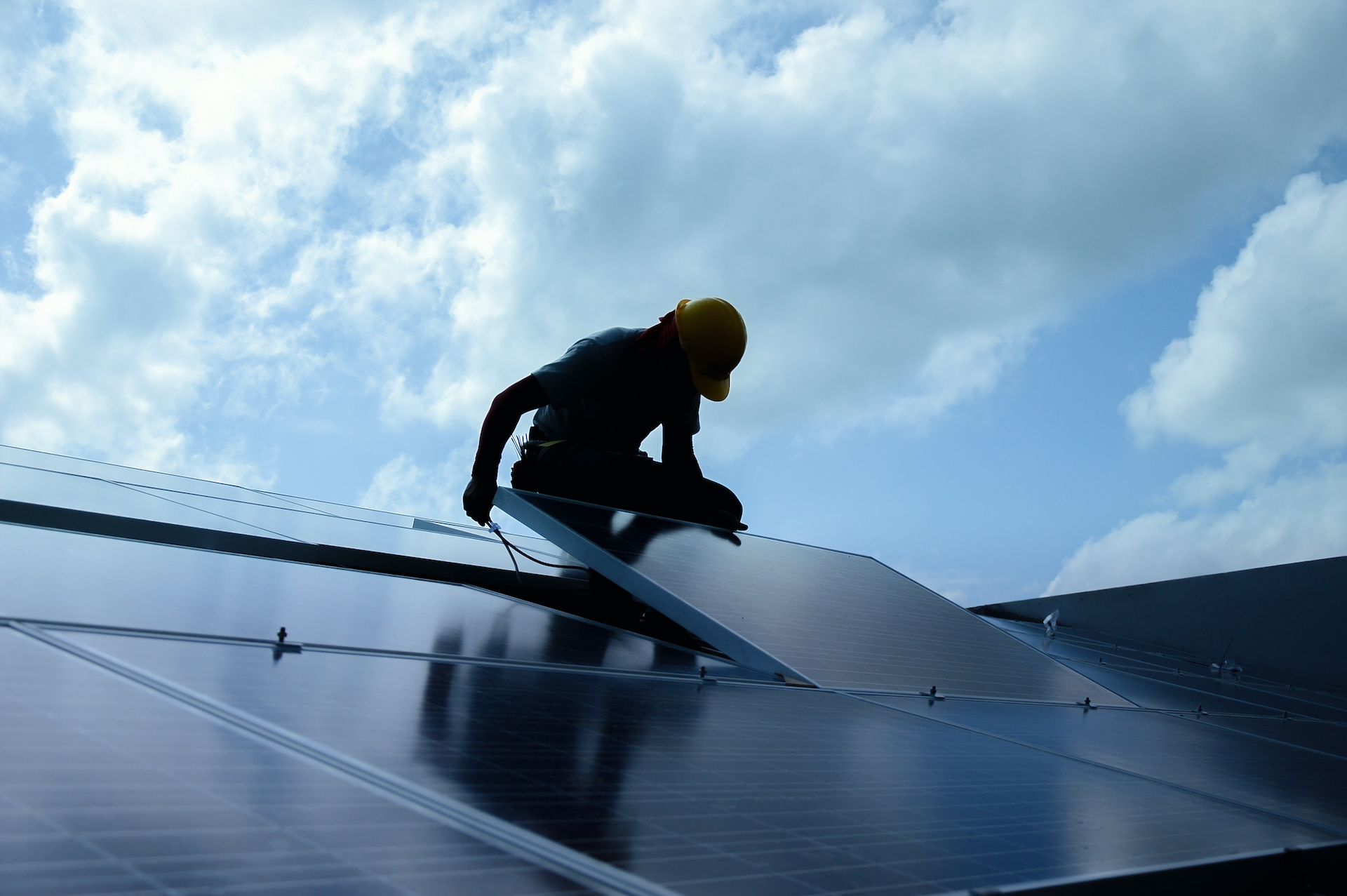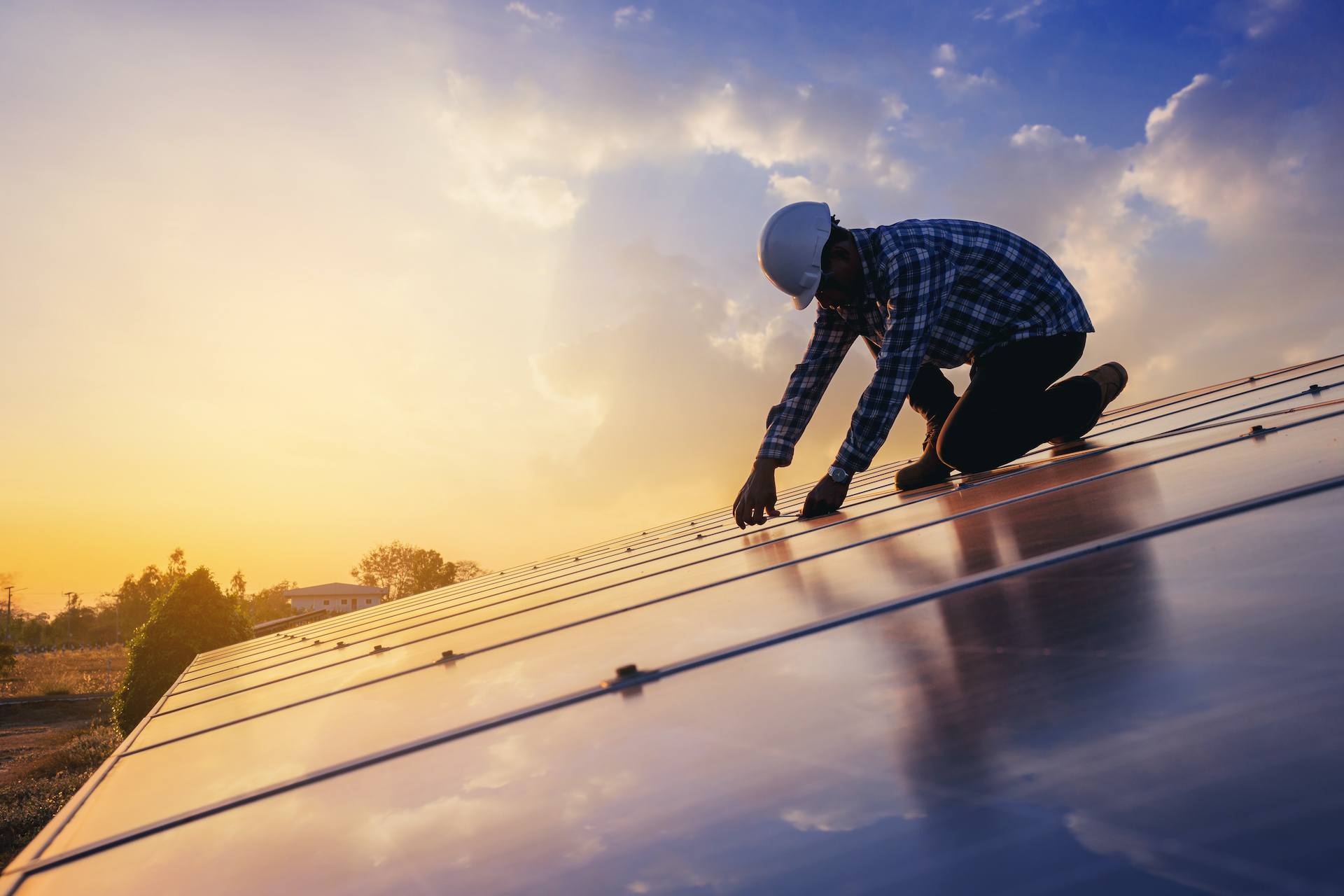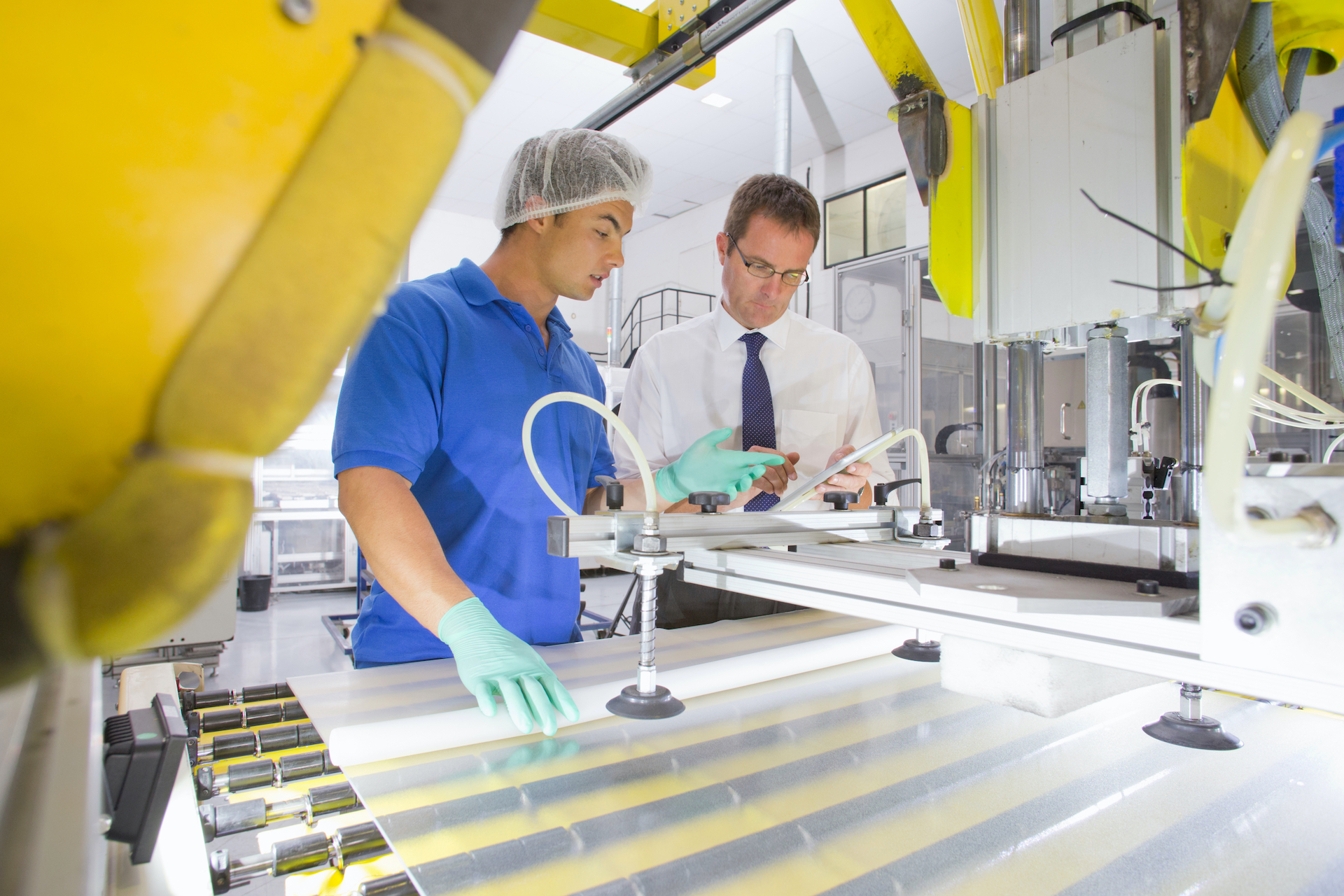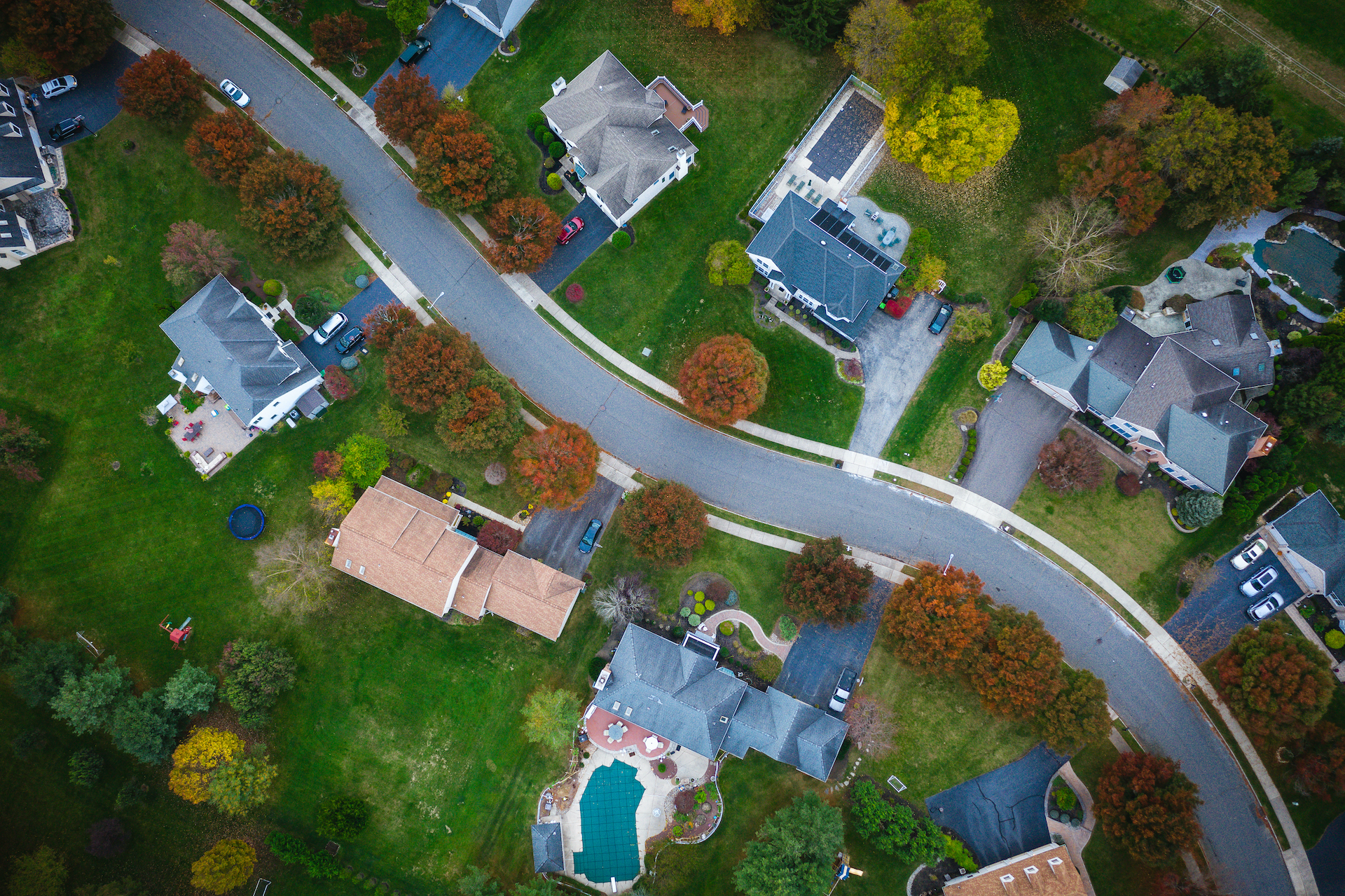Solar Shingles, Solar Tiles & Solar Roofing
Fundamentally, solar roofing is just what it sounds like – solar panels that function as your roof. Combining solar and roofing seems like a no-brainer, right? Instead of installing a roof on a home and then installing solar panels above the roof, why not create a solar panel system which can shed water and just replace your roof with solar panels? From that perspective, solar roofing makes total sense, but read on, and we’ll give you the inside scoop on solar roofing and whether you should consider it if you’re thinking about home solar.
Solar Shingles, Solar Tiles & Solar Roofing
Fundamentally, solar roofing is just what it sounds like – solar panels that function as your roof. Combining solar and roofing seems like a no-brainer, right? Instead of installing a roof on a home and then installing solar panels above the roof, why not create a solar panel system which can shed water and just replace your roof with solar panels? From that perspective, solar roofing makes total sense, but read on, and we’ll give you the inside scoop on solar roofing and whether you should consider it if you’re thinking about home solar.
Introduction to solar roofing
Though awareness of solar roofing has increased significantly since Tesla first announced that it was developing a solar roofing product, solar roofing is not new. The concept of solar being incorporated into roofing materials has been around for decades before Tesla got into the game. Solar roofing can take many forms. The most common are solar shingles or solar tiles, but other form factors are available that mimic or integrate with different roof types, such as standing seam metal roofing or slate roofing.
While there are obvious potential cost savings from adding solar into a roofing product and installing the roof and solar at the same time, at this point, solar roofing is almost purely about aesthetics. Solar roofing products are designed to be low-profile and blend into the roof line instead of a traditional solar panel system where larger format solar panels are typically mounted 4-6 inches above the roof. Before we get into more details, take a look at the pictures below to see a traditional solar panel system compared with a few current solar roofing products on the market.
Introduction to solar roofing
Though awareness of solar roofing has increased significantly since Tesla first announced that it was developing a solar roofing product, solar roofing is not new. The concept of solar being incorporated into roofing materials has been around for decades before Tesla got into the game. Solar roofing can take many forms. The most common are solar shingles or solar tiles, but other form factors are available that mimic or integrate with different roof types, such as standing seam metal roofing or slate roofing.
While there are obvious potential cost savings from adding solar into a roofing product and installing the roof and solar at the same time, at this point, solar roofing is almost purely about aesthetics. Solar roofing products are designed to be low-profile and blend into the roof line instead of a traditional solar panel system where larger format solar panels are typically mounted 4-6 inches above the roof. Before we get into more details, take a look at the pictures below to see a traditional solar panel system compared with a few current solar roofing products on the market.
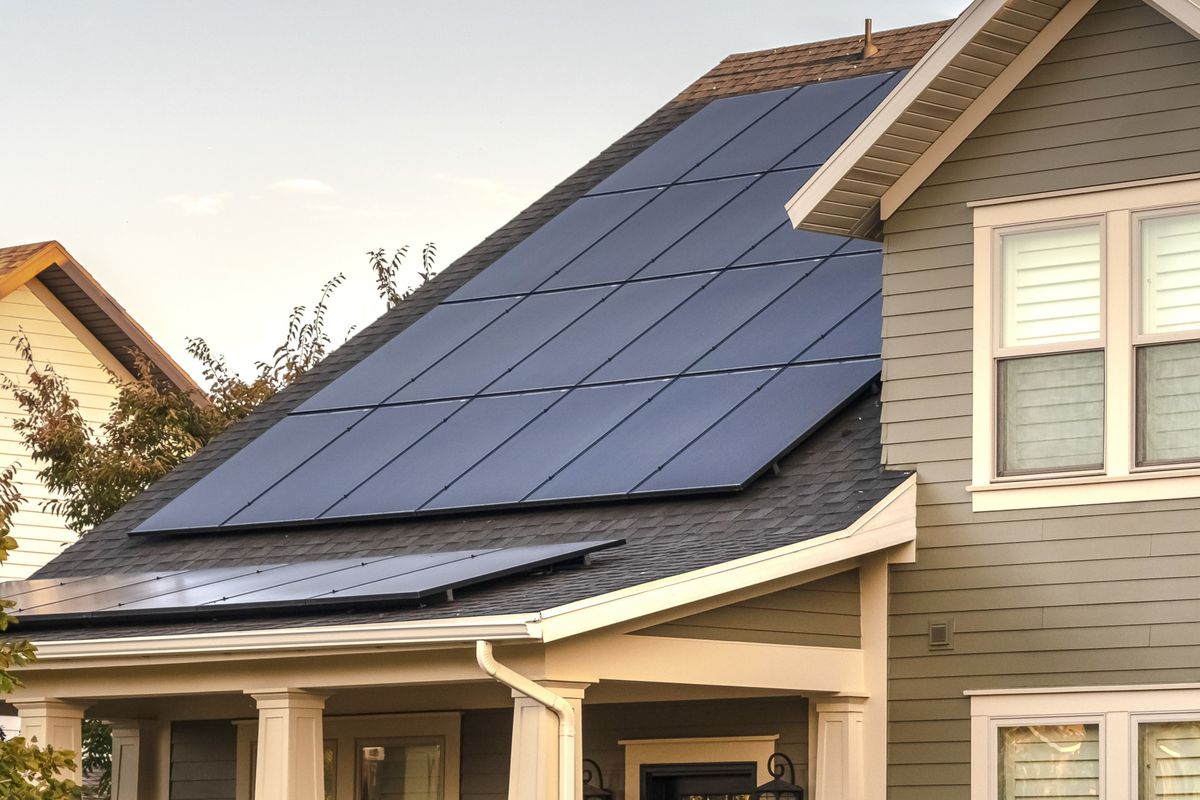
Image Source: This Old House

Image Source: This Old House
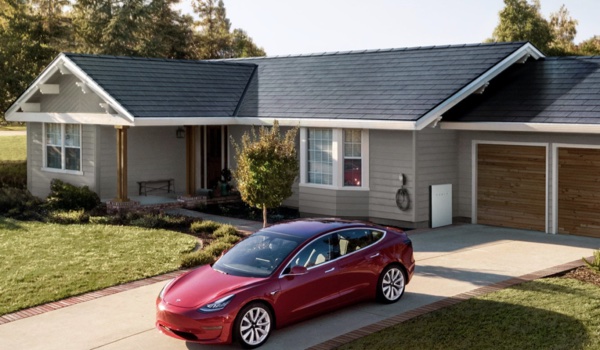
Image Source: The Verge
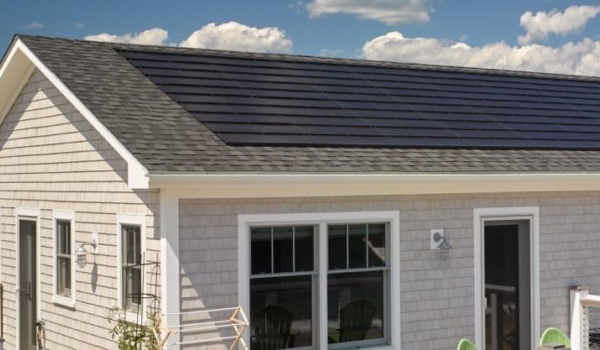
Image Source: Certainteed
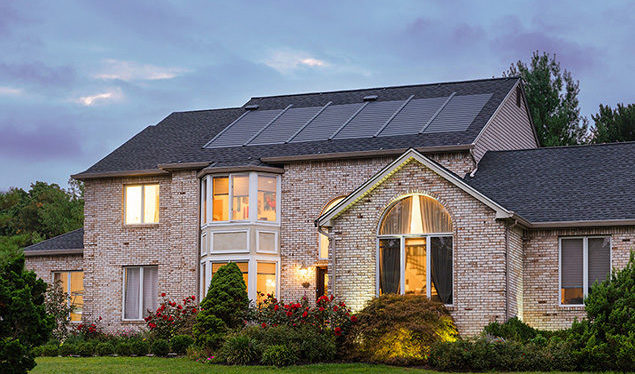
Image Source: GAF Energy
So what are the differences between solar panels and solar roofing? We mentioned the obvious one above – aesthetics. If you place a high value on the aesthetics of your home or if the best location for solar panels is on the front of your home, you may want to consider solar roofing. Before you make a decision, there are other factors that you should consider.

Image Source: The Verge

Image Source: Certainteed

Image Source: GAF Energy
So what are the differences between solar panels and solar roofing? We mentioned the obvious one above – aesthetics. If you place a high value on the aesthetics of your home or if the best location for solar panels is on the front of your home, you may want to consider solar roofing. Before you make a decision, there are other factors that you should consider.
Where solar roofing is better than solar panels
Solar roofing provides better waterproofing
Waterproofing is a clear advantage for solar roof systems. When installed correctly, traditional solar panel systems should not cause leaks, but the fact is that to mount a traditional solar panel system, the contractor will need to drill 50 to 100 holes in your roof to attach the mounting points to your roof structure. By comparison, the attachments of solar roof systems are covered by subsequent rows of solar roof panels in the same way that nails used to attach shingles to your roof are covered by the next row of shingles. With no exposed fastening points, solar roof systems have the advantage when it comes to waterproofing.
Solar roofing adds less weight to your roof
Solar roof systems are typically lower in weight than traditional solar panel systems. Removing 2 to 3 pounds per square foot that typical asphalt shingles weigh or even more for different roof types further reduces the total weight of a solar roof system compared with a traditional solar panel system with an existing roof under it. In fairness, most roof structures can handle the additional weight of a traditional solar panel system, but solar roofing can be a good option if your roof structure can’t accommodate the extra weight.
Low-profile solar roofing performs better in wind and snow events
While low-profile solar roof panels operate at higher temperatures and lower efficiencies, the lack of space under the solar roof panels also means that wind can’t effectively get underneath and lift the panels. In addition, if you live in a location that receives a lot of snow, solar roof systems will shed accumulated snow easier than a traditional solar panel system which protrudes above the roof and will catch snow. In extreme cases, the weight and movement of a lot of snow can cause damage to traditional solar panel systems.
Solar roofing makes more sense if you need a new roof anyway
While traditional solar panel systems can be installed above an existing roof (assuming that your roof is in good shape), solar roofs make the most sense when you need a new roof. Here’s where you can realize some cost savings to offset the higher cost of a solar roof: Since you’re not paying for both a roof and a traditional solar panel system above it, you will save some money with a solar roof. Also, since you’re using a single contractor to install both at once, the contractor’s cost will be lower, and some of that savings should get passed along to you. Actual solar roof prices can vary a lot, but these synergies help offset the premium for a solar roof a little bit.
Where solar roofing is better than solar panels
Solar roofing provides better waterproofing
Waterproofing is a clear advantage for solar roof systems. When installed correctly, traditional solar panel systems should not cause leaks, but the fact is that to mount a traditional solar panel system, the contractor will need to drill 50 to 100 holes in your roof to attach the mounting points to your roof structure. By comparison, the attachments of solar roof systems are covered by subsequent rows of solar roof panels in the same way that nails used to attach shingles to your roof are covered by the next row of shingles. With no exposed fastening points, solar roof systems have the advantage when it comes to waterproofing.
Solar roofing adds less weight to your roof
Solar roof systems are typically lower in weight than traditional solar panel systems. Removing 2 to 3 pounds per square foot that typical asphalt shingles weigh or even more for different roof types further reduces the total weight of a solar roof system compared with a traditional solar panel system with an existing roof under it. In fairness, most roof structures can handle the additional weight of a traditional solar panel system, but solar roofing can be a good option if your roof structure can’t accommodate the extra weight.
Low-profile solar roofing performs better in wind and snow events
While low-profile solar roof panels operate at higher temperatures and lower efficiencies, the lack of space under the solar roof panels also means that wind can’t effectively get underneath and lift the panels. In addition, if you live in a location that receives a lot of snow, solar roof systems will shed accumulated snow easier than a traditional solar panel system which protrudes above the roof and will catch snow. In extreme cases, the weight and movement of a lot of snow can cause damage to traditional solar panel systems.
Solar roofing makes more sense if you need a new roof anyway
While traditional solar panel systems can be installed above an existing roof (assuming that your roof is in good shape), solar roofs make the most sense when you need a new roof. Here’s where you can realize some cost savings to offset the higher cost of a solar roof: Since you’re not paying for both a roof and a traditional solar panel system above it, you will save some money with a solar roof. Also, since you’re using a single contractor to install both at once, the contractor’s cost will be lower, and some of that savings should get passed along to you. Actual solar roof prices can vary a lot, but these synergies help offset the premium for a solar roof a little bit.
Where solar panels are better than solar roofing
Solar roofing panels are more expensive than traditional solar panels
Traditional solar panels have standardized on a size which almost every manufacturer uses, so the entire industry, from manufacturing equipment suppliers, to raw material suppliers has evolved into manufacturing solar panels in this size efficiently and at the lowest cost possible. When a company manufactures a customized solar roof panel that deviates from these standard dimensions, manufacturing efficiency goes down. Lower manufacturing volume and customized components further increase the cost of a solar roofing panel.
Solar roofing requires specialized contractors
Because of the dual functionality of a solar roof, there are very few contractors who have been properly trained to design, sell and install solar roofs. Those contractors need to be both roofing, electrical and solar experts. Further, because each solar roof system is unique, these contractors must be trained to install a specific solar roof system. The impact of this is two-fold: First, this means that finding a contractor to install a solar roof system is harder than finding a contractor to install a traditional solar panel system. Second, because there are fewer contractors who can install solar roof systems, there is less competition which makes getting multiple quotes more difficult and can result in higher prices.
Solar roofing operates at higher temperatures than solar panels
All solar cells convert sunlight to electricity less efficiently as their operating temperature increases. The closer to the roof surface a solar panel is, the higher the operating temperature since there’s less space for air to circulate under the solar panel and keep it cool. The low profile of a solar roof system means that the solar roofing panels are installed very close to the roof surface. Depending on the specific design of a solar roofing system, the impact of this higher operating temperature can be a 5 percent to 10 percent reduction in energy generated than a traditional solar panel.
Coatings to hide solar cells can reduce sunlight for solar roofs
When a solar roofing product has a coating or film that is designed to hide the solar cells and improve the aesthetics of the solar roof, the coating or film will reduce the amount of sunlight which can reach the solar cells and can further reduce energy generation by 10 percent to 20 percent. Some, but not all solar roof panels have such a coating.
There is less solar cell density in a solar roof panel
Traditional solar panels are designed to pack as many cells into the panel as possible, while solar roofing panels need to balance efficiency with aesthetics and water-shedding. Typically this leads to a lower density of solar cells in a solar roof panel. Depending on the specific design, this could reduce solar shingle or solar tile efficiency by 2 percent to 10 percent.
So what’s the total impact of performance reductions for a solar roof system? The actual decrease in performance will be specific to a particular solar roof system, but you should expect a reduction in performance of at least 10 percent. We’ll review the most well-established solar roof system options later on this page. But ultimately, you’ll have to decide whether the better aesthetics of a solar roof system is worth the reduced performance and increased cost.
Where solar panels are better than solar roofing
Solar roofing panels are more expensive than traditional solar panels
Traditional solar panels have standardized on a size which almost every manufacturer uses, so the entire industry, from manufacturing equipment suppliers, to raw material suppliers has evolved into manufacturing solar panels in this size efficiently and at the lowest cost possible. When a company manufactures a customized solar roof panel that deviates from these standard dimensions, manufacturing efficiency goes down. Lower manufacturing volume and customized components further increase the cost of a solar roofing panel.
Solar roofing requires specialized contractors
Because of the dual functionality of a solar roof, there are very few contractors who have been properly trained to design, sell and install solar roofs. Those contractors need to be both roofing, electrical and solar experts. Further, because each solar roof system is unique, these contractors must be trained to install a specific solar roof system. The impact of this is two-fold: First, this means that finding a contractor to install a solar roof system is harder than finding a contractor to install a traditional solar panel system. Second, because there are fewer contractors who can install solar roof systems, there is less competition which makes getting multiple quotes more difficult and can result in higher prices.
Solar roofing operates at higher temperatures than solar panels
All solar cells convert sunlight to electricity less efficiently as their operating temperature increases. The closer to the roof surface a solar panel is, the higher the operating temperature since there’s less space for air to circulate under the solar panel and keep it cool. The low profile of a solar roof system means that the solar roofing panels are installed very close to the roof surface. Depending on the specific design of a solar roofing system, the impact of this higher operating temperature can be a 5 percent to 10 percent reduction in energy generated than a traditional solar panel.
Coatings to hide solar cells can reduce sunlight for solar roofs
When a solar roofing product has a coating or film that is designed to hide the solar cells and improve the aesthetics of the solar roof, the coating or film will reduce the amount of sunlight which can reach the solar cells and can further reduce energy generation by 10 percent to 20 percent. Some, but not all solar roof panels have such a coating.
There is less solar cell density in a solar roof panel
Traditional solar panels are designed to pack as many cells into the panel as possible, while solar roofing panels need to balance efficiency with aesthetics and water-shedding. Typically this leads to a lower density of solar cells in a solar roof panel. Depending on the specific design, this could reduce solar shingle or solar tile efficiency by 2 percent to 10 percent.
So what’s the total impact of performance reductions for a solar roof system? The actual decrease in performance will be specific to a particular solar roof system, but you should expect a reduction in performance of at least 10 percent. We’ll review the most well-established solar roof system options later on this page. But ultimately, you’ll have to decide whether the better aesthetics of a solar roof system is worth the reduced performance and increased cost.
Solar roofing system options
Still interested in solar roofing? Here’s a list of reputable manufacturers who currently offer solar roofing products and some information on their systems.
Tesla
There is no need to introduce Tesla, but their solar roof has proved elusive so far. Even Elon Musk has admitted that production of the solar roof product has been difficult. Early estimates showed Tesla’s solar roof as the most expensive of the available options. But the recently released “v3” was priced quite a bit lower than earlier versions (at least until their recent price increases). Still they’ve persisted and continued to improve the product, releasing a higher power version in late 2021 that improved the wattage from 59W to 72W per solar tile.
Tesla’s glass and metal solar roof mixes active and passive tiles, and are designed to look very similar to create a more uniform roof aesthetic. If you look very closely, you may be able to tell the active solar roof area from the passive inactive roof area, but from a distance, you may not be able to tell. Having a roof that’s made largely of glass seems like a risky proposition (how do you walk on it if there’s maintenance needed and what happens if something hits it?), though Tesla backs it up with a decent 25-year warranty.
Given Tesla’s shift to online sales, the only place where you’ll find Tesla’s solar roof is on their website.
If you can get past the reports of Tesla’s poor customer service for solar, you can get in line with a $1,000 deposit. But it could be awhile before you’re able to get your solar roof.
CertainTeed
Founded in 1904, CertainTeed is one of the largest roofing manufacturers in the country. Initially launched in 2011, CertainTeed currently offers two solar roofing systems – Apollo II for shingle roofs and Apollo Tile II for concrete tile roofs. In these systems, solar shingles and solar tiles are integrated into surrounding traditional asphalt shingle and concrete tile roofs. The solar shingles and tiles are still noticeable but much less obtrusive than a standard solar panel system.
CertainTeed does not take deposits and solar roofing products are available through their network of solar installers and roofers. You can find a list of their certified installers here and more information about the Apollo II and Apollo Tile II system here.
SunTegra
Similar to CertainTeed, Suntegra offers a solar shingle and solar tile, which are integrated into a traditional roof that surrounds the solar roof. The SunTegra Shingle and SunTegra Tile are available through their network contractors. You can find more about their products here, but if you’re interested, you’ll need to either call or fill out this form to have someone contact you and provide a quote.
GAF
GAF is the largest roofing manufacturer in the world and is the largest asphalt shingle manufacturer in the United States. Created in 2019, GAF Energy is a subsidiary of GAF’s parent company, Standard Industries and focuses exclusively on solar roofing.
The first solar roofing system from GAF was Decotech which integrates standard (large format) solar panels into a traditional shingle roof through their custom-designed mounting and flashing system. While the system looks a bit more integrated than a traditional system, you can judge whether the aesthetics are worth the premium cost. You can find more information on the Decotech system here
More recently, GAF Energy made a splash with the announcement of their new product, Timberline ES in early 2022. Promoted as the “world’s first nailable solar shingle” (not totally true since now defunct Uni-Solar introduced a nailable solar shingle in 2010), Timberline ES attempts to mimic an asphalt shingle in both aesthetics and installation.
It does look quite sleek on a roof (except for the vertical wire covers), but power density is fairly low at 15.6% efficiency vs. 19-20% for standard modules. But there’s no doubt that GAF Energy will continue to refine and improve their solar roof products so be on the lookout for new models and generations. If you’re interested, you can call or fill out this form to have someone contact you to provide a quote.
Solar roofing system options
Still interested in solar roofing? Here’s a list of reputable manufacturers who currently offer solar roofing products and some information on their systems.
Tesla
There is no need to introduce Tesla, but their solar roof has proved elusive so far. Even Elon Musk has admitted that production of the solar roof product has been difficult. Early estimates showed Tesla’s solar roof as the most expensive of the available options. But the recently released “v3” was priced quite a bit lower than earlier versions (at least until their recent price increases). Still they’ve persisted and continued to improve the product, releasing a higher power version in late 2021 that improved the wattage from 59W to 72W per solar tile.
Tesla’s glass and metal solar roof mixes active and passive tiles, and are designed to look very similar to create a more uniform roof aesthetic. If you look very closely, you may be able to tell the active solar roof area from the passive inactive roof area, but from a distance, you may not be able to tell. Having a roof that’s made largely of glass seems like a risky proposition (how do you walk on it if there’s maintenance needed and what happens if something hits it?), though Tesla backs it up with a decent 25-year warranty.
Given Tesla’s shift to online sales, the only place where you’ll find Tesla’s solar roof is on their website.
If you can get past the reports of Tesla’s poor customer service for solar, you can get in line with a $1,000 deposit. But it could be awhile before you’re able to get your solar roof.
CertainTeed
Founded in 1904, CertainTeed is one of the largest roofing manufacturers in the country. Initially launched in 2011, CertainTeed currently offers two solar roofing systems – Apollo II for shingle roofs and Apollo Tile II for concrete tile roofs. In these systems, solar shingles and solar tiles are integrated into surrounding traditional asphalt shingle and concrete tile roofs. The solar shingles and tiles are still noticeable but much less obtrusive than a standard solar panel system.
CertainTeed does not take deposits and solar roofing products are available through their network of solar installers and roofers. You can find a list of their certified installers here and more information about the Apollo II and Apollo Tile II system here.
SunTegra
Similar to CertainTeed, Suntegra offers a solar shingle and solar tile, which are integrated into a traditional roof that surrounds the solar roof. The SunTegra Shingle and SunTegra Tile are available through their network contractors. You can find more about their products here, but if you’re interested, you’ll need to either call or fill out this form to have someone contact you and provide a quote.
GAF
GAF is the largest roofing manufacturer in the world and is the largest asphalt shingle manufacturer in the United States. Created in 2019, GAF Energy is a subsidiary of GAF’s parent company, Standard Industries and focuses exclusively on solar roofing.
The first solar roofing system from GAF was Decotech which integrates standard (large format) solar panels into a traditional shingle roof through their custom-designed mounting and flashing system. While the system looks a bit more integrated than a traditional system, you can judge whether the aesthetics are worth the premium cost. You can find more information on the Decotech system here
More recently, GAF Energy made a splash with the announcement of their new product, Timberline ES in early 2022. Promoted as the “world’s first nailable solar shingle” (not totally true since now defunct Uni-Solar introduced a nailable solar shingle in 2010), Timberline ES attempts to mimic an asphalt shingle in both aesthetics and installation.
It does look quite sleek on a roof (except for the vertical wire covers), but power density is fairly low at 15.6% efficiency vs. 19-20% for standard modules. But there’s no doubt that GAF Energy will continue to refine and improve their solar roof products so be on the lookout for new models and generations. If you’re interested, you can call or fill out this form to have someone contact you to provide a quote.
Adding it all up – does a solar roof make sense for you?
We’ve outlined why solar roof systems are inherently more expensive and noted that some cost savings would offset some of that premium and identified a few situations where solar roofing has advantages over a traditional solar panel system. So what’s the bottom line? It depends on your goals, your budget, and your preference.
Factoring in both the higher product cost and the offsetting savings from a solar roof system, you should plan on a premium of 30 percent to 50 percent for a solar roof system when compared to getting a new roof plus a traditional solar panel system. So if an average traditional solar panel system costs $24,000 and an average new roof costs $10,000, expect a solar roof to cost up to $41,000 ($34,000 x 50%) before any tax credits or incentives. In high electricity cost states or states with good rebates and incentives, you may still be able to get a good return on a solar roof investment. And if you’re willing to wait, the cost of solar roof systems will undoubtedly decrease in the coming years as they become more refined and are produced and installed in higher volumes.
If you really want a home solar system but don’t like the aesthetics of a traditional solar panel system, a solar roof isn’t a bad idea if you can get one. But if you have a few years left on your current roof and are willing to wait, you’ll almost surely find a better designed and lower-cost solar roof in a few years.
Adding it all up – does a solar roof make sense for you?
We’ve outlined why solar roof systems are inherently more expensive and noted that some cost savings would offset some of that premium and identified a few situations where solar roofing has advantages over a traditional solar panel system. So what’s the bottom line? It depends on your goals, your budget, and your preference.
Factoring in both the higher product cost and the offsetting savings from a solar roof system, you should plan on a premium of 30 percent to 50 percent for a solar roof system when compared to getting a new roof plus a traditional solar panel system. So if an average traditional solar panel system costs $24,000 and an average new roof costs $10,000, expect a solar roof to cost up to $41,000 ($34,000 x 50%) before any tax credits or incentives. In high electricity cost states or states with good rebates and incentives, you may still be able to get a good return on a solar roof investment. And if you’re willing to wait, the cost of solar roof systems will undoubtedly decrease in the coming years as they become more refined and are produced and installed in higher volumes.
If you really want a home solar system but don’t like the aesthetics of a traditional solar panel system, a solar roof isn’t a bad idea if you can get one. But if you have a few years left on your current roof and are willing to wait, you’ll almost surely find a better designed and lower-cost solar roof in a few years.
Due to the highly specialized design and installation of each individual solar roof system, Sentinel doesn’t currently support solar roofing systems.
If you’re interested in a traditional solar panel system, or just want to see whether your home is a good candidate for home solar, we’d be happy to help. Get started with a free Solar Assessment by clicking below.
Due to the highly specialized design and installation of each individual solar roof system, Sentinel doesn’t currently support solar roofing systems.
If you’re interested in a traditional solar panel system, or just want to see whether your home is a good candidate for home solar, we’d be happy to help. Get started with a free Solar Assessment by clicking below.
Have a question on solar roofing or anything else? Send us a message and we’ll answer ASAP.
Have a question on solar roofing or anything else? Send us a message and we’ll answer ASAP.
Learn about solar
Find honest answers to some of the most commonly asked questions on home solar and clean energy.
Learn about solar
Find honest answers to some of the most commonly asked questions on home solar below.





